Intel’s Keynote at CES 2019: 10nm, Ice Lake, Lakefield, Snow Ridge, Cascade Lake
by Ian Cutress on January 7, 2019 7:45 PM EST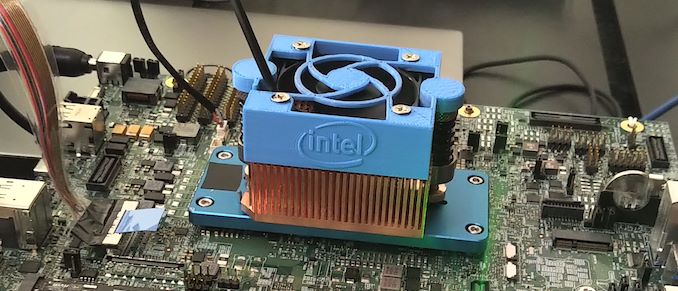
This year it seems that Intel is finally ready to talk about 10nm. After next-to-nothing on the subject at CES 2018, Intel is now talking about three new processor families: Ice Lake, Lakefield, and Snow Ridge. Despite the naming, it looks like Intel might be coming in out of the cold – to finally let it go – and roadmaps on upcoming products are being discussed.
It should be pointed out that Intel’s presentation did not mention anything about the company’s search for a new CEO, or any updates about Intel’s increased demand for its high-end Xeon processors. These are matters that the company will no doubt want to save for their earnings release later this month.
Stage 1: Consumer
Intel Client Group SVP Gregory Bryant took to the stage for Intel to announce two major hardware platforms and a new initiative in mobile computing. These were Ice Lake, Lakefield, and Project Athena.
Ice Lake: First Volume 10nm
One of the topics discussed at Intel’s Architecture Day, but under embargo until this week, is Intel’s vision for its first generation of 10nm-class consumer processors. We had already been given some details about Sunny Cove, the new Core design, as well as the updated Gen11 graphics architecture, but it will be Ice Lake that puts them both together.
Ice Lake, or more specifically Ice Lake-U it would appear, will be Intel’s first volume client processor on 10nm. Mobile processors are usually small, so it makes sense for Intel to use one for their first volume part in order to balance yields and costs – we’ve seen it before with 14nm, where Broadwell-U entered the market first. The base design from Intel looks to have four cores, eight threads, and 64 GPU execution units for graphics. Intel stated that they are driving the die area even more towards graphics under Gen11 in order to get more performance. This will be, according to Intel, its first standard (GT2-class) processor with 1 TFLOP of integrated graphics performance.
| Intel Ice Lake '4+2' For Notebooks | |
| Manufacturing Process | Intel 10nm |
| Cores / Threads | 4 / 8 |
| CPU Microarchitecture | Sunny Cove |
| Graphics Microarchitecture | Gen11 |
| Graphics Execution Units | GT2, 64 |
| TDP | 15W |
| Memory | LPDDR4X - yes LPDDR4X-3200 ? |
| Memory Bandwidth | 50-60 GB/s |
| Connectivity | TB3 over Type-C Wi-Fi 6 (802.11ax) with CRF |
| Image Processing Unit | 4th Gen |
Hardware wise, Intel explained that these processors would be using LPDDR4X. In a different segment of the presentation it was mentioned that the increase in integrated graphics (from a 24 EU configuration to a 64 EU configuration) required increasing memory bandwidth up to at least 50 GB/s. Intel did not disclose the specific memory frequencies supported, but with these bits of information I’d put LPDDR4X-3200 as the lower bound, as it offers 51.2 GB/s of bandwidth in dual channel mode. This is surprising, given that Intel is usually conservative with supported memory speed declarations – they still make a DDR4-2933 processor in their lineup – so jumping to 3200 would indeed be an unexpected shift for the company.
On the connectivity side, the chipsets for Ice Lake will enable Wi-Fi 6 (802.11ax) over the CNVi interface when an appropriate Intel CRF module is installed. Native Thunderbolt 3 is also expected, which of course operates over USB Type-C connections. Intel reworked the interface for camera support as well, adjusting the interface such that a MIPI-to-USB chip is no longer needed in a laptop bezel for webcam support.
Intel also mentioned software support, such as the new VNNI instructions, openVINO toolkit support, Cryptographic ISA instructions, and support for Overworld. These processors will have at least a similar security level as Cascade Lake, with hardware-enabled Spectre v2 mitigations.
Intel's Image Processing Unit, or IPU, is also upgraded to a fourth generation model. This part of the chip, according to Intel, now has a concurrent imaging pipeline for machine learning, and can support a single IR/RGB camera for login (e.g. Windows Hello). The IPU's power plane has also been tweaked, giving it more performance/power states so the system can save power as needed.
Ice Lake Designs: More Battery Life
Beyond the 10nm process node change, Intel also announced two additional ways in which it was improving battery life for Ice Lake-U systems. Firstly, the company described its efforts on platform innovation, saying they did a top-to-bottom analysis of what in the system is drawing power and finding ways to reduce it while still keeping performance. As a result, combined with the new ‘1W’ display technologies the company introduced at Computex in June, we’ve been told that optimized Intel devices should now be able to achieve 25+ hours of battery life.
Following a similar line of reasoning, Intel also reworked the board design specifications for thin and light devices. For a typical 12-inch laptop, Intel has freed up room for about 10% more battery capacity – going from 52 Wh to 58 Wh – thanks to reducing the total z-height and x/y dimensions of the motherboard. Interestingly, they've accomplished this without reducing the component count, bringing down the board size while retaining a given number of components.
Lakefield: Foveros Technology Coming Soon
At Intel’s Architecture Day in December, we saw a new class of chip from the company: a hybrid x86 CPU. It was a big announcement for two reasons: the first was that it featured both Core architecture and Atom architecture CPU cores, something that Intel had never done before. Ever since Arm's success with the similar concept of big.Little designs, we have been expecting Intel to come out with some products following this idea, but it was big news that this was finally the time. The second reason for it being a big announcement is that it used ‘Foveros’, Intel’s 3D active interposer technology that puts the cores and graphics on a chip on an interposer. However in a wrinkle from other interposer-based solutions, Foveros but puts the IO in the interposer (rather than using the interposer as a 'dumb' piece of silicon to route signals) all with through-silicon vias to make it work. A chip like this is much smaller in the x/y dimensions, as well as showcasing some very nice packaging technology.
Intel is giving that chip an official family name: Lakefield. The goal of designing Lakefield came from an OEM request to develop a chip that had 2 mW idle power draw, something much lower than current designs. Thus Lakefield was created. It uses a single Sunny Cove core, four Tremont Atom cores, and Gen11 graphics, all built on 10nm.
There have been questions about where exactly this chip will end up, or who even asked for it in the first place. Intel has stated that while a single customer put in the request, Lakefield will be available to all OEM partners if they want to design products around it. A lot of discussion has been held that this was an Apple request, and given Apple’s device portfolio, its volume of sales, and its desire to drive down power with optimized unique designs, the argument for Apple holds some water. But it doesn't sit right with me. This is more a low-powered chip, perhaps even lower power than the A12X in the iPads, so I don’t think Apple would want that chip in one of its MacBooks. (When we asked at architecture day, they said the chip could easily compete at the 7W TDP range, but I imagine it could go lower if needed.) Personally I’m of the opinion that it’s for the dual-screen Lenovo Yogabook. That device is super thin, super light, powers an LCD display and an eInk-like display, and doesn’t need that much power to do what it needs to do. But because it’s so thin there's limited room for battery cells, meaning that power consumption and the resulting battery life are all important, which is where Lakefield is likely to excel.
Intel announced that Lakefield was expected to be in production for products in 2019, which aligns with Intel’s commitment to having 10nm devices on shelves for the holiday season in 2019 (which would mean Christmas 2019).
Project Athena: Building Devices Ready for AI and 5G
As the single biggest force behind the PC ecosystem – and yet not a company that's selling hardware directly to consumers in most cases – Intel enjoys creating programs that try and push the market in certain directions. Depending on who you talk to, the Ultrabook program was either a big failure or a big success, but in the end it did give OEMs a chance to play with thin and light designs for a few years before the hardware gave users a good user experience and battery life. Project Athena is something slightly different, in that it will be a program for Intel and OEMs to work together to enable new experiences with technology coming in the next decade.
Terms like ‘5G’ and ‘Artificial Intelligence’ are only going to become more ubiquitous through 2020 and beyond, so Intel is jumping on it today. Current connectivity experiences for notebooks and laptops vary significantly, and AI implementations are either basic or removed from the local machine entirely and processed in cloud servers. With Project Athena, Intel is going to discuss with OEMs, with partners, customers, software developers, etc. what they need in order to enable these new terms to provide a good user experience. It isn’t just limited to 5G and AI, but we might see more requests for better AI toolkits, or power optimized designs for mobile connectivity, or more compute-related acceleration. It also extends to OEMs in their device design – if an OEM needs several cameras, or new biometrics, or supports more gestures, or new microphone array capabilities etc.
As this is a new program based in aspirational discussion followed by execution, it is unclear what the end goal will look like, only that the aim is around improvements to user experiences.
New 9th Gen Core CPUs
Intel also announced, briefly, that they will be releasing six new desktop 9th Gen Core processors, from Core i3 to Core i9. It did not disclose which parts or what the specifciations are, however we assume they will be available soon. We found the parts listed on Intel's ARK database just after the keynote and you can read our writeup here.
Also in the 9th Gen space, Intel said that the mobile 9th Gen Core processors will be available in Q2.


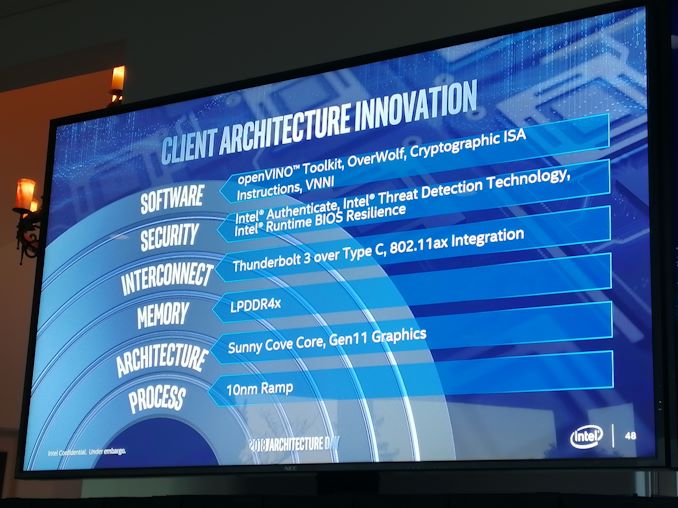
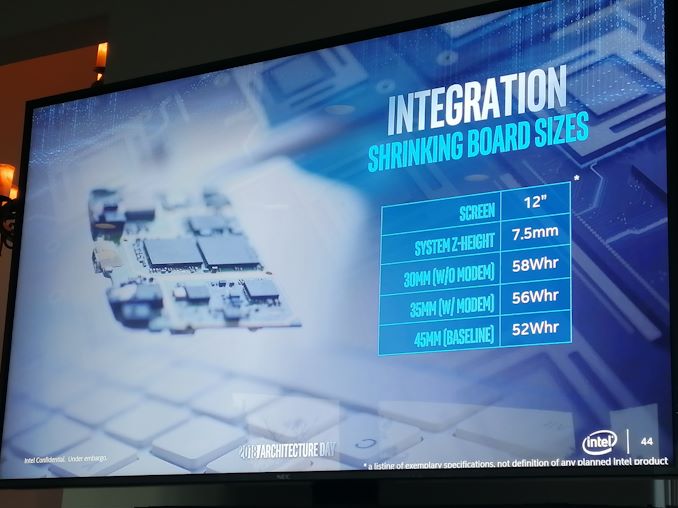
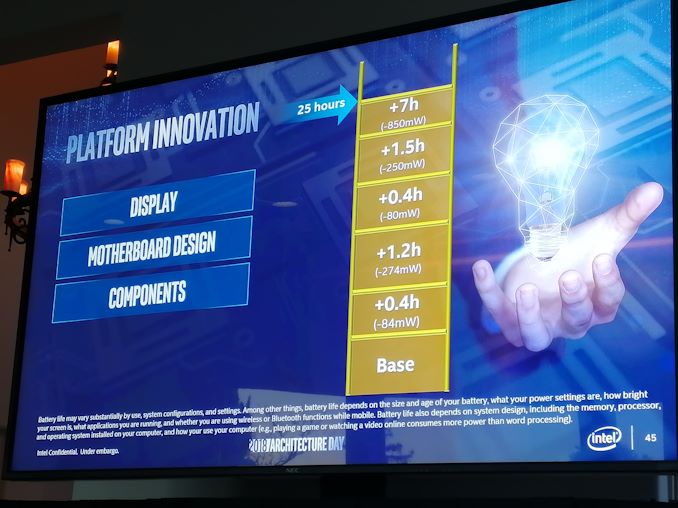
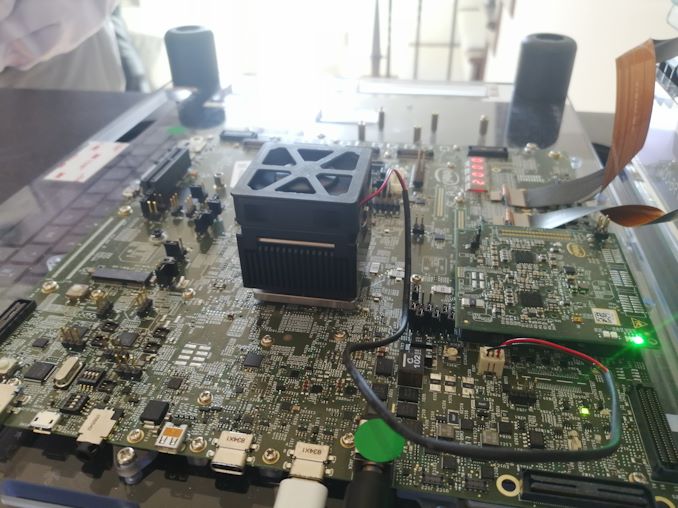
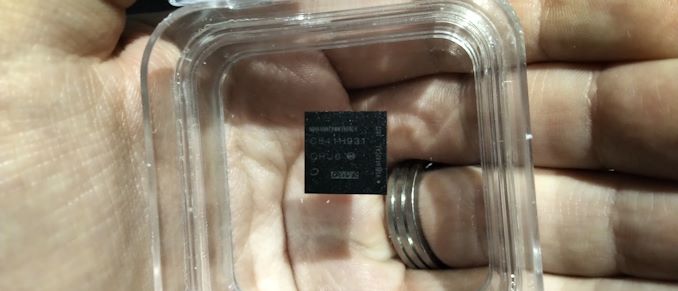








60 Comments
View All Comments
KateH - Monday, January 7, 2019 - link
dude, what?first off, what on earth does this have to do with "china and arabs" vs "america"?
TSMC = based in Taiwan (it's even in the name)
GlobalFoundaries = based in California
second off, .... uhh nevermind. <facepalm>
TheJian - Tuesday, January 8, 2019 - link
America First pal ;) I'd rather have INTEL win than ANYONE from Korea or controlled by Arabs who spend a ton of money on terrorism, more than any other group in the world. Even allies like Saudi’s/UAE do it.https://www.washingtonpost.com/news/global-opinion...
https://www.forbes.com/sites/forbesinternational/2...
Global Foundries is ATIC...LOL. Face palm. You don't read past the product label do you? Just google ATIC fab global foundries. WE don't own it in USA (who owns you matters, not where you park the building), as AMD sold it ages ago.
If another president takes over before trump breaks the China economy more, they will RULE many things if they keep stealing us blind and we keep giving up jobs. At some point we might be speaking Chinese in 20-50yrs (their plan is just that!). Trump is reversing that though, we had 16 steel factories before, then down to 4 up to Obama (nafta, China WTO entrance etc did this 70,000 factories close over this stuff). Back to 10 now already and growing. IF the wall is made of steel, more will re-open. Go 100% block, and they go bankrupt quick.
https://www.scmp.com/economy/china-economy/article...
If another pres gets in wall street will just tell them to stop China trade war (politicians are usually easily bought), and go back to fleecing of America. A few years down the road they take over NK, Taiwan, Japan, Philippines, etc with a president that acts like Obama when Russia took Crimea (gave them tents...LOL, instead of GUNS/AMMO).
OH, and MU (a stock I own) bought a company in Taiwan, and they had traitors there working for China to STEAL tech.
https://www.justice.gov/opa/pr/prc-state-owned-com...
See the lawsuit FTC/DOJ just nailed them on. So, even NOT conquered, you still can't trust stuff that is CHINA related in ANY way, including Taiwan. You should be VERY careful with anyone owned or operated by Chinese. They are buying up Silicon Valley to steal everything too. IE, startups being bought right and left, to send it all home to China after we build it all.
https://www.idahostatesman.com/news/business/artic...
Traitors. Did you notice its Taiwan employees STEALING tech for CHINA (we’re talking Executive level here)? Nice local rundown of everything in the case. Currently China is blocked from buying AMAT or Lam Research tools that would allow them to compete with USA (can’t make high end stuff). But a loser president could change all that. A fighter like trump will stop it, at least for 6 more years if he builds that wall but if not, likely not elected again as that was the MAJOR campaign promise. Oh, and Limbaugh, Colter, Bongino etc will attack constantly as Rush already did it for 2 days on the wall saying trump was caving, trump let him know he wasn’t. Clearly both of these and more will attack, and trump will go down. Together, a few pundits can end trump if he doesn’t build the wall with the size of their audiences. A LOT of people will hear the message and vote him out. He was worried enough to comment on Rush’s two day bashing ;) Good, he should be worried. Fortunately the MU tech stolen was OLD anyway.
https://www.bloomberg.com/news/articles/2019-01-05...
Taiwan president and people afraid, and China thinks they OWN Taiwan (80% thinks China can piss off, 20% side with China though…ouch). Do you read news? Building Military islands to take over the trade routes etc. Google Xi Jinping’s proposal for unification. Uh, sounds like they want it all ;)
https://www.scmp.com/comment/insight-opinion/artic...
The article title says it all doesn’t it?
“The day a US Navy vessel arrives in Kaohsiung is the day that our People’s Liberation Army unifies Taiwan with military force,” he told mainland media. OK, so they are actually saying they’re looking for an excuse to take them over…LOL.
Ignorance is bliss I guess. Google China 2050 plan (must get Taiwan back by then). Nuff said? Stop watching fake news and READ more. :)
wut - Tuesday, January 8, 2019 - link
Why in the world are you posting all that here? It's not even directly related to the topic. You are wasting your time... I'm trying to help you, by the way. Post all that in a different topic, like under comments section of a political article and/or an article talking about intellectual property.Otherwise, you'd likely to be ignored. Why waste your breath.
cheshirster - Wednesday, January 9, 2019 - link
It is actually China and Korea vs AmericaSantoval - Tuesday, January 8, 2019 - link
As Lord Polonius had said, "Brevity is the soul of wit".TheJian - Tuesday, January 8, 2019 - link
So I should take advice from a pompous idiot character from a Shakespeare book? Nah...https://en.wikipedia.org/wiki/File:Graham%27s_Hier...
Next time say something worthwhile. There's a pic explaining EXACTLY how you do that. Which you didn't even get on the chart IMHO, but I guess someone could think you made the 1st or 2nd level...LOL.
Retycint - Tuesday, January 8, 2019 - link
Using ALL CAPS on words does not make your point stronger, it just exposes your vitriolbji - Tuesday, January 8, 2019 - link
Used for single words or small phrases just adds emphasis to those words. That was not an ALL CAPS post, so get off your high horse.TheJian - Tuesday, January 8, 2019 - link
You consider it shouting, I don't. That is YOUR problem, not mine. You assume vitriol, but you don't even know me...LOL. I don't think it makes my point stronger, I think it gets your attention. It did, or you wouldn't be whining about it RIGHT? ;)So you just did the same thing...Whatever. That must be vitriol, you mad bro? ROFLMAO. What exactly was cruel or bitter about my criticism of a site CLEARLY (see what I did there?) lacking in data that users of these cards would WANT to know? Anandtech hasn't wronged me personally in some way (I know they lie a lot & mislead the readers even more - but it doesn't hurt my purchases etc, I ignore the fake news...LOL), they are misleading their entire audience for ages as I noted clear back to 660ti and before. I just finally got figured people should be aware of the REAL data, and posted for 660ti and many times since. I guess all the LOL/ROFL, grins, winks etc are lost on some of you people :) It is typical of libtards to tell you to shut up, or "you can't say that", etc instead of following this:
https://en.wikipedia.org/wiki/File:Graham%27s_Hier...
...So you can actually form a REAL argument to debate someone. As Jordan Peterson said, you can't discuss things without risking offending people. I don't care if you're offended by my caps nor what you perceive as "vitriol"...ROFL. Crawl back under your rock until you can figure out how to form an argument please. You're wasting my time ;)
HStewart - Tuesday, January 8, 2019 - link
I am surprise how people are so blind and believe that everything revolves around the desktops like in the 90's. Also it is important that we compare apples to apples - not Intel 14mm vs 7nm - we should comparing Intel 10nm vs 7nm. It also important one company 7nm vs 10nm does mean it better - it is important to note that nm rating is process and can vary per vendor. It also important to note architexture changes - and it likely Intel's new Sunny Cove could beat AMD even on 14nm.10nm is coming this year and high volume by holiday season. I think you are confusing 2020 date with new GPU from Intel.
It would be foolish to believe that Intel is not coming back strong after AMD efforts with Ryzen. 2019 is going to be exciting year even with desktops on 10nm. Keep in mind that with CPU's using less and less power, it likely one day - desktop chips will be same as mobile chips.
Please no CAPs - it just reminds me to much of Wccftech and is not reliable.